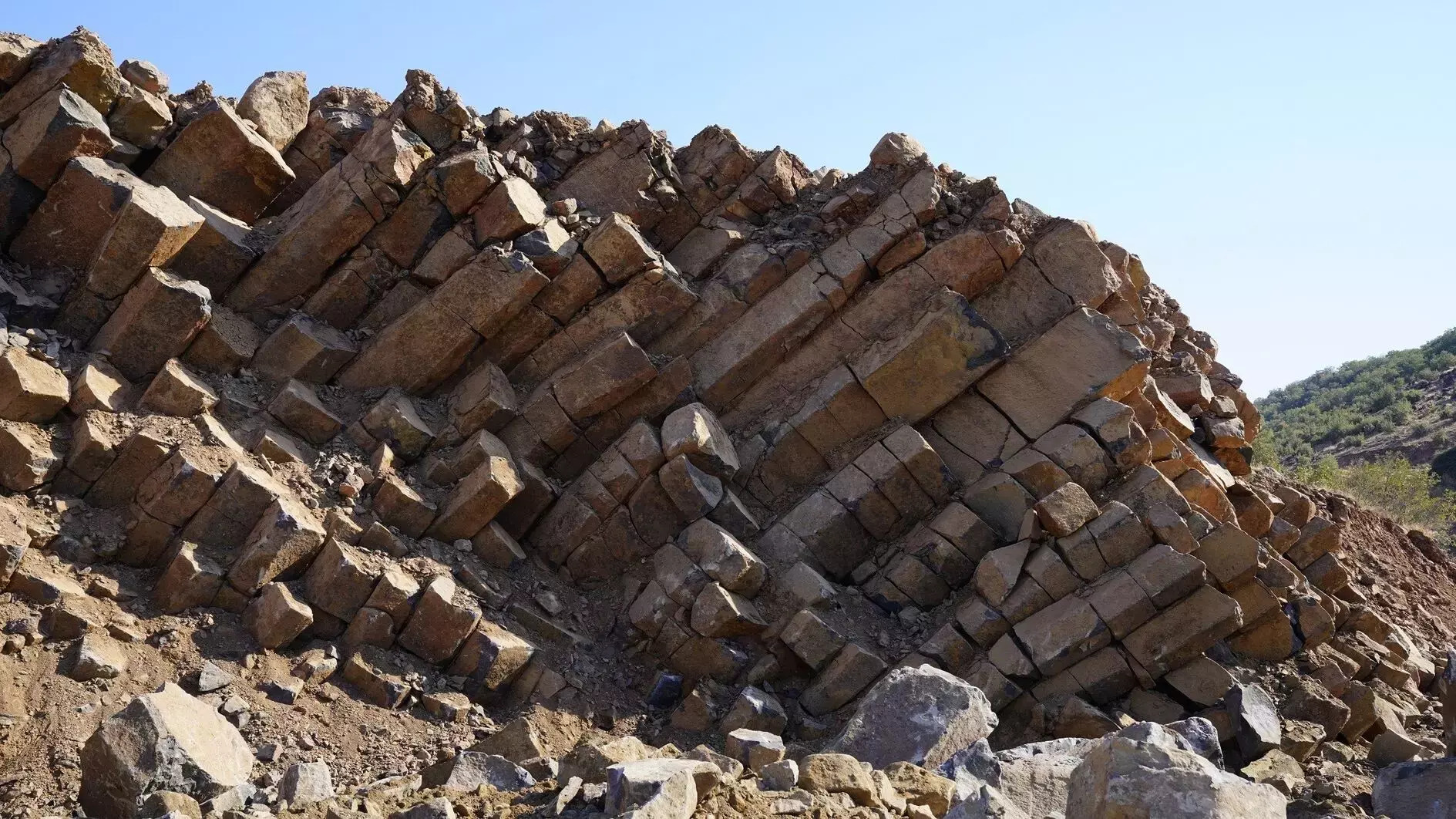During road construction in the Siverek district of Şanlıurfa province, hundreds of basalt columns estimated to be between 2 and 5 million years old were discovered and have since been designated as a protected site.
The discovery occurred at the 31st kilometer of the Siverek-Kahta highway, where teacher İlyas Gizligöl identified the unusual basalt columns and quickly recorded them. He shared photos and videos with academics at Dicle and Harran Universities for further analysis.
“These hexagonal structures are clearly out of the ordinary. Their uniqueness is striking,” Gizligöl stated.
Ferhat Bektaş, a local resident, also acknowledged the importance of the discovery, mentioning that he had seen similar basalt formations online.
The basalt columns, created by the ancient volcanic activity of Karacadağ, are recognized as a rare geological feature. Their formation occurs when volcanic lava cools and contracts.
As thick lava flows cool uniformly and at a slow pace, it begins to shrink and crack due to the reduction in volume during its transformation from a molten state to solid rock, resulting in the characteristic hexagonal patterns of the columns.
As the lava cools, it shrinks and cracks into polygons, usually hexagons, due to the efficient distribution of stress. These cracks extend downward, forming long, vertical basalt columns. The regular hexagonal shapes are a natural outcome of this process, resulting in symmetrical formations.
Mehmet Sait Şahinalp, head of Harran University’s Geography Department, emphasized the importance of the discovery: “Basalt columns are seen in only 10-11 places in Türkiye. This is a great find for our province — a natural treasure that dates back millions of years.”
“These columns exhibit very regular hexagonal shapes, a feature not commonly seen elsewhere. They represent an important geological heritage.”
Şahinalp highlighted the tourism potential of the basalt columns, noting that Türkiye is home to several geoparks. He referenced the UNESCO-recognized Kula-Salihli Geopark in Manisa as an example, emphasizing the importance of these natural formations in boosting local tourism.
“The discovery of such a formation is crucial for our province, both as a geological heritage and as a potential tourism attraction. Scientists, historians and geographers should carry out a study here,” he continued.
The basalt columns’ location is particularly important, considering its proximity to the Takaran Valley and the route to Nemrut, both popular tourism destinations.
Şahinalp mentioned the new discovery carries on the region’s already rich historical and cultural importance, highlighted by the presence of Göbeklitepe. Dating back 12,000 years, Göbeklitepe, also located in the province, is recognized as the world’s oldest known temple complex.
“Geoparks are major tourist attractions worldwide. Bringing this area into the tourism sector could increase brand value and boost tourism revenues for Şanlıurfa,” Şahinalp stated.
Şahinalp reiterated the importance of protecting the newly discovered natural heritage. “Just as we safeguard our cultural and historical artifacts, like Göbeklitepe, we must also protect this geological treasure.”
“It is a place discovered during road works, and there has been a partial destruction here. Immediate action is needed to halt ongoing construction and preserve these natural formations,” he urged.
Soon after the calls, the area was secured and underwent thorough inspections with the involvement of the Şanlıurfa Provincial Directorate of Environment, Urbanization, and Climate Change, the Natural Heritage Protection Directorate, and geological engineers.
During the inspection, gendarmerie teams maintained strict security around the basalt columns, ensuring their careful protection within the designated perimeter.









